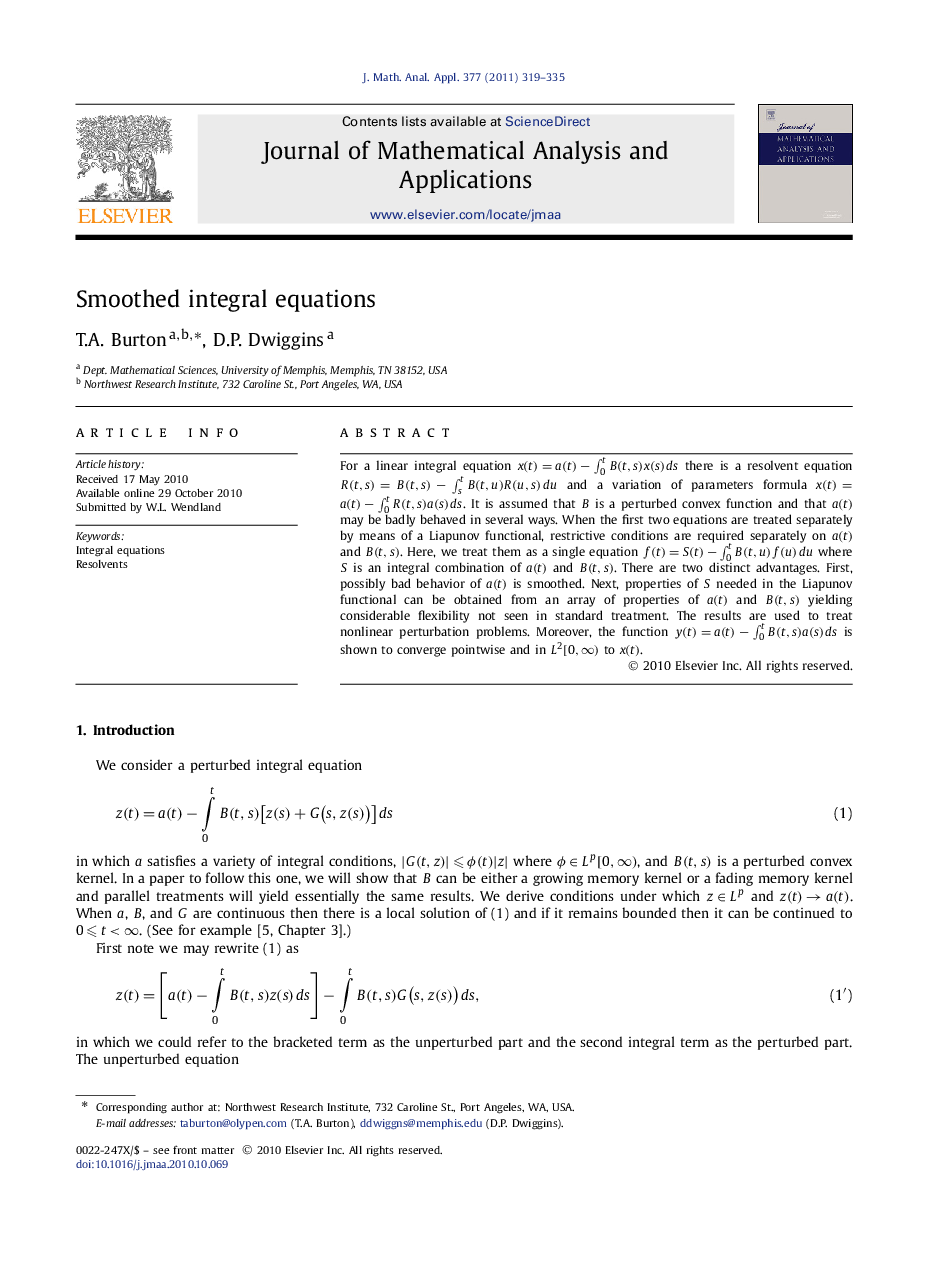| Article ID | Journal | Published Year | Pages | File Type |
|---|---|---|---|---|
| 6419509 | Journal of Mathematical Analysis and Applications | 2011 | 17 Pages |
For a linear integral equation x(t)=a(t)ââ«0tB(t,s)x(s)ds there is a resolvent equation R(t,s)=B(t,s)ââ«stB(t,u)R(u,s)du and a variation of parameters formula x(t)=a(t)ââ«0tR(t,s)a(s)ds. It is assumed that B is a perturbed convex function and that a(t) may be badly behaved in several ways. When the first two equations are treated separately by means of a Liapunov functional, restrictive conditions are required separately on a(t) and B(t,s). Here, we treat them as a single equation f(t)=S(t)ââ«0tB(t,u)f(u)du where S is an integral combination of a(t) and B(t,s). There are two distinct advantages. First, possibly bad behavior of a(t) is smoothed. Next, properties of S needed in the Liapunov functional can be obtained from an array of properties of a(t) and B(t,s) yielding considerable flexibility not seen in standard treatment. The results are used to treat nonlinear perturbation problems. Moreover, the function y(t)=a(t)ââ«0tB(t,s)a(s)ds is shown to converge pointwise and in L2[0,â) to x(t).
